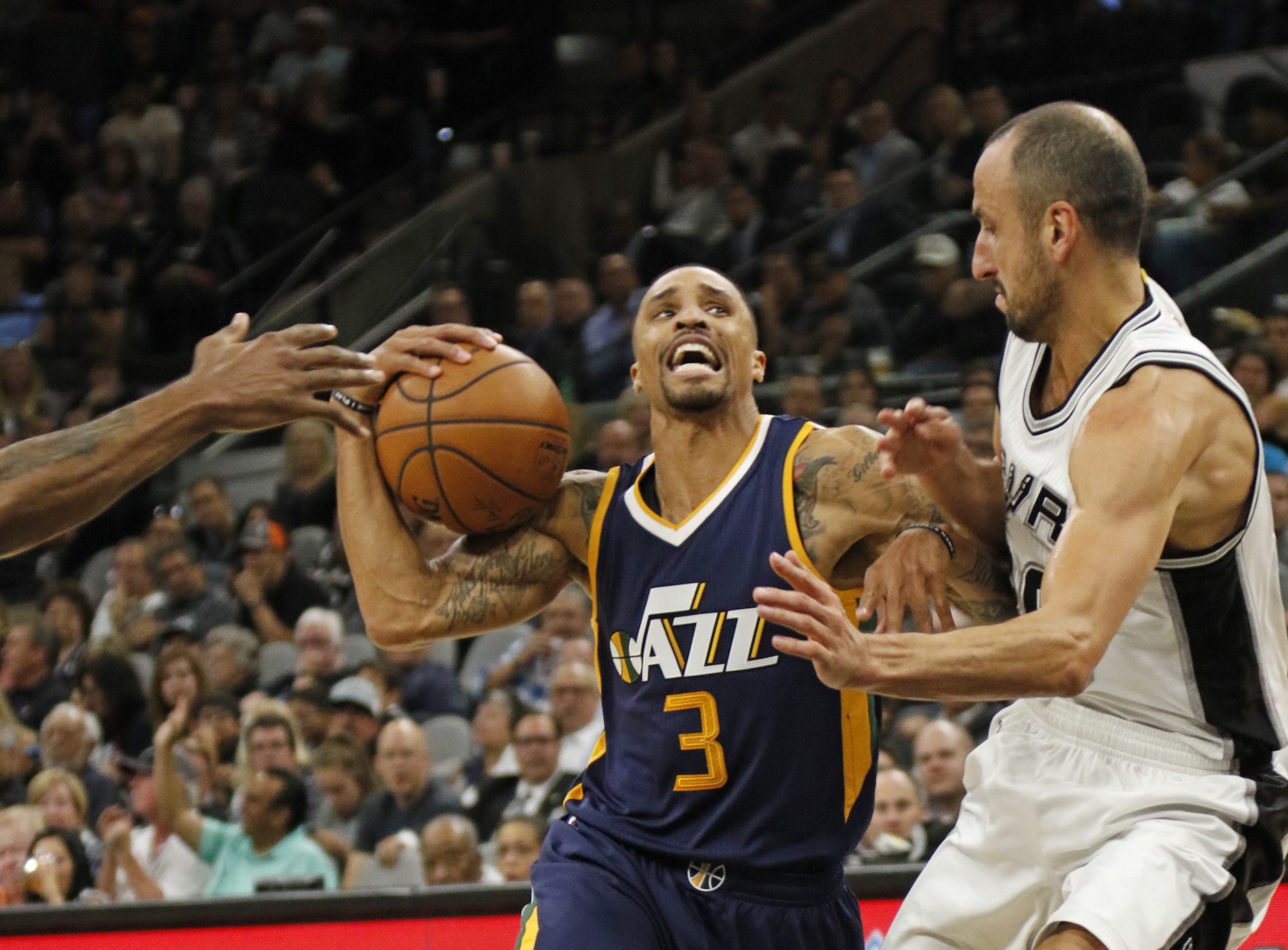Editor’s Note: Statistics for this piece were gathered before the Spurs’ 101-99 loss to the Houston Rockets Wednesday evening.
The San Antonio Spurs have had a fairly successful start to the NBA season. Kawhi Leonard has emerged as an early candidate for MVP and the Spurs’ bench, which was evaluated by many to be a weakness heading into the season, has been gelling well. Players like Dewayne Dedmon and Nicolas Laprovittola have had promising stretches of play, making many fans hopeful that the Spurs’ depth is not the issue it was once pegged to be. After losing more home games in the first two weeks of the season than they did all of last season, however, many fans have been searching for a potential cause to the early season struggles at home.
Defense has long been a staple of the Spurs. While the offense has had many different looks over the past twenty seasons, one constant has always been their highly effective defense, especially at the rim. In recent seasons, the NBA have been able to record more advanced statistics using player tracking. This allows deeper investigation into where offensive players are when they score, where the nearest defender is, or what type of play a team is most efficient at running. Many fans have noticed the Spurs’ defensive troubles in their losses, especially with the starters on the floor, but these stats will give more insight into exactly where the defense has been exploited.
So far in this young season, the Spurs have been effective at defending right at the rim. The Spurs have held their opponents to 55.2% shooting in the restricted area, the 5th best mark in the league. While the sample size is small, these numbers are promising as rim protection was supposed to be an exploitable weakness of this Spurs team. The Spurs have also held opponents to only 14.3 field goals made in the restricted area per game, a category that ranks them 5th best in the NBA again. If the opponent is shooting further back, however, the Spurs begin to run into some issues. When an opposing player shoots anywhere in the paint that is not the restricted area, they shoot 42.2%, a worse percentage than 16 other teams allow. While the Spurs are stingier than more than two-thirds of the NBA on allowing shots in the paint, opponents are more efficient when shooting such shots against the Spurs than they are against other teams that allow a similar number field goal makes from inside the paint. Four teams allow 4.6 field goals made from outside of the restricted area but within the paint per game, but Spurs opponents have needed at least 1.2 attempts less from that area to reach that mark. What this means is that the Spurs are doing a generally good job of denying opponents from taking shots inside the paint, but are having a tough time keeping opponents from scoring if they get there.
Defending from mid-range, anywhere that is outside the paint but within the perimeter, has been even more difficult for the Spurs. Opponents are shooting 44.9% against the Spurs from mid-range, ranking the Spurs 27th in that category. A big reason for these challenges in the paint and mid-range for the Spurs is that opponents are torching them in pick and rolls. During pick and rolls against the Spurs, when the roll man finishes the possession, he is scoring 1.15 points-per-possession (or PPP), ranking the Spurs 25th in defending this category. When the initial ball handler in a pick and roll finishes the possession, the Spurs are allowing .87 PPP, the 8th worst mark in the league. Opponents are running these plays a combined 19.2% of possessions against the Spurs, or roughly one out of every five times down the floor. Post-ups are another way that opponents are hurting the Spurs from these areas of the court. The Spurs allow 1.04 PPP when opponents post-up, which ranks them as fourth worst in the league.
The Spurs do better defending threes. Opponents are shooting only 25% against the Spurs from the left corner when shooting 3s and 31% from the right corner. These numbers rank the Spurs as the 3rd and 11th best at defending these shots, respectively. However, they are allowing 37.2% from the top of the key, ranking them 26th.
While many of these numbers initially don’t look great, you can expect to see several changes that will provide a buff to their defense in the coming weeks. First, Danny Green is returning to the court. Due to his prowess as a perimeter defender, opponents will find it hard to score on the Spurs from 3-point range against the pairing of Green and Kawhi Leonard. Green and Leonard’s combined presence on the perimeter should also result in better ball denial of opponents looking to attack the Spurs from inside the paint or midrange. Another change the Spurs can make is playing Dewayne Dedmon earlier in the rotation. While Dedmon does not have the offensive abilities of LaMarcus Aldridge or Pau Gasol, he is probably the Spurs’ best big man defender. The season is still young and the Spurs still have time to gel, but expect to see the Spurs make changes throughout the season as they strive to retain their position as one of the NBA’s elite defensive teams.
Statistics used via NBA.com/stats.
Add The Sports Daily to your Google News Feed!
